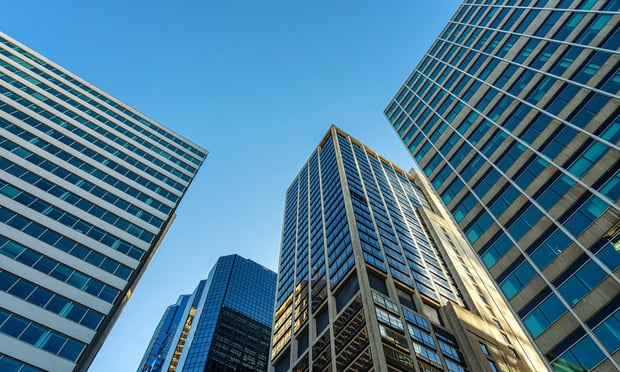"Three consecutive years of record growth and expansion in Orlando's office market has come to an abrupt end," Andrew McCaw Jr., vice president/office, Grubb & Ellis Co., Orlando, confirms to GlobeSt.com.
The fourth-quarter vacancy level matched the third-quarter performance, a new G&E study shows. But the vacancy curve has been generally upwards since fourth quarter 1999 when vacancies were at 8.3%. By quarter in 2000, they went to 9.7%, 10.2%, 9.9% and 9.3%. First quarter 2001 saw 10.9%, followed by 12.4% in second quarter.
Net absorption for the last quarter of 2001 totaled 62,069 sf versus 403,539 sf in the third quarter. For the year, the market absorbed 926,692 sf, a 54% drop compared to the same period a year ago. The numbers mean there is more space than tenants.
Still, on a quarterly basis, the market absorbed an average 238,000 sf throughout the year. Orlando's best recent year was 2000 when the two million sf of net new space was leased out.
Helping out fourth-quarter construction of 500,000 sf was 400,000 sf of new space that was pre-leased in build-to-suit projects
"The good news is that the recession looks primarily to be a demand side issue rather than a supply side problem," says McCaw, whose late father was one of the area's top land brokers.
Since fourth quarter 1999, Orlando's office inventory soared by six million sf. The Lake Mary-Heathrow and Southwest Orlando submarkets alone added one million sf each. Downtown, Maitland and Osceola/Celebration submarkets each added 500,000 sf.
"The quick economic downturn, followed by the 9-11 attacks caught developers by surprise and has created an imbalance in supply, particularly in Southwest Orlando and Lake Mary/Heathrow," McCaw says.
"On a positive note," the broker says, "many of the region's numerous governmental defense contractors are beginning to receive an infusion of orders from Washington from development of the military's Joint Strike Fighter aircraft." Those new contracts could translate to more needed office, manufacturing and warehouse space in the near future.
Despite high vacancy levels in several submarkets, the 6.35 million-sf central business district managed to stay under the 10% level, at 9.6%. Also under 10% were East Orange County/University, 9.5% (2.87 million sf); and West Orlando/Ocoee/Winter Garden, 7.7% (225,275 sf).
Not so fortunate were Southwest/tourist, 26% vacancy out of 3.39 million sf; Osceola/Celebration/Kissimmee, 16.4% (1.1 million sf); Heathrow/Lake Mary/Sanford, 15.4% (3.9 million sf); Southeast/Airport, 14.9% (591,140 sf); Maitland, 14.8% (5.86 million sf); Winter Park, 12.8% (3.18 million sf); and Altamonte/Longwood, 11.7% (2.69 million sf).
As a group, the suburbs had an average vacancy mark of of 15.2%, one of the highest in the past five years. By category, class A (17.3 million sf) was 15.7% vacant; class B (12 million sf) , 11.9%; class C (896,673 sf), 10.1%; and medical (34,000 sf), 6.8%.
Despite a lackluster fourth quarter and annual performance, property owners were still able to increase class A and B rents by 1% to 1.5% throughout 2000, the Grubb & Ellis analysis shows.
Winter Park enjoys the highest class A rent at a quoted average of $26.55 per sf; class B, $18.09. Downtown is close behind at $24.67 per sf for class A and $19.72 for class B, the highest in the area.
Southwest/tourist, with the highest vacancy level at 26%, is asking $22.86 per sf for class A and $19.36 for class B. Other markets: Southeast/airport, $21.75 and $16; Maitland, $21.99 and $17.89; Osceola/Celebration; Kissimmee, $20.78 and $15.90; East Orange County/University, $20.35 and $16.47; Heathrow/Lake Mary/Sanford, $19.81 and $13; and Altamonte/Longwood, $19.50 and $16.34.
"Marketwide, landlords have been experiencing minimal rent growth since mid-1999," McCaw says. "During this time, tenants have had control of the market which has put developers and landlords into bidding wars for landing tenants in their property."
The broker predicts the trend will continue through 2002 "or as long as vacancy and sublease numbers remain high." Large rent hikes have been curbed in the class A sector because of new product that has been coming on line continuously since 1999. For that reason, class B space rents have been rising faster than class A numbers.
One of the hottest office submarkets over the next few years should be the east Orlando/University hub, McCaw says. The reason: the 1,027-acre Central Florida Research Park and the 137-acre Quadrangle, next to the University of Central Florida, are filling up fast and may need more land shortly to grow. The two parks account for 80% of the 2.87 million sf-inventory in the East/University submarket.
Among developers in that submarket, three firms dominate--Koger Equity of Boca Raton, FL; Opus South of Minneapolis; and the Alter Group of Chicago.
Koger has completed the final building at the five-building, 360,000-sf Koger Center within Central Florida Research Park. Opus South has finished the 124,000-sf University Corporate Center 1 building and plans to proceed with the next two building phases of 106,000 sf each.
Alter Group has developed 300,000 sf at Central Florida Research Park and plans to build an additional 400,000 sf in the near future.
McCaw says that even with some of the bleak numbers for fourth quarter 2000, "the worst may be over" because "data suggests the market may have bottomed out."
© Touchpoint Markets, All Rights Reserved. Request academic re-use from www.copyright.com. All other uses, submit a request to [email protected]. For more inforrmation visit Asset & Logo Licensing.






